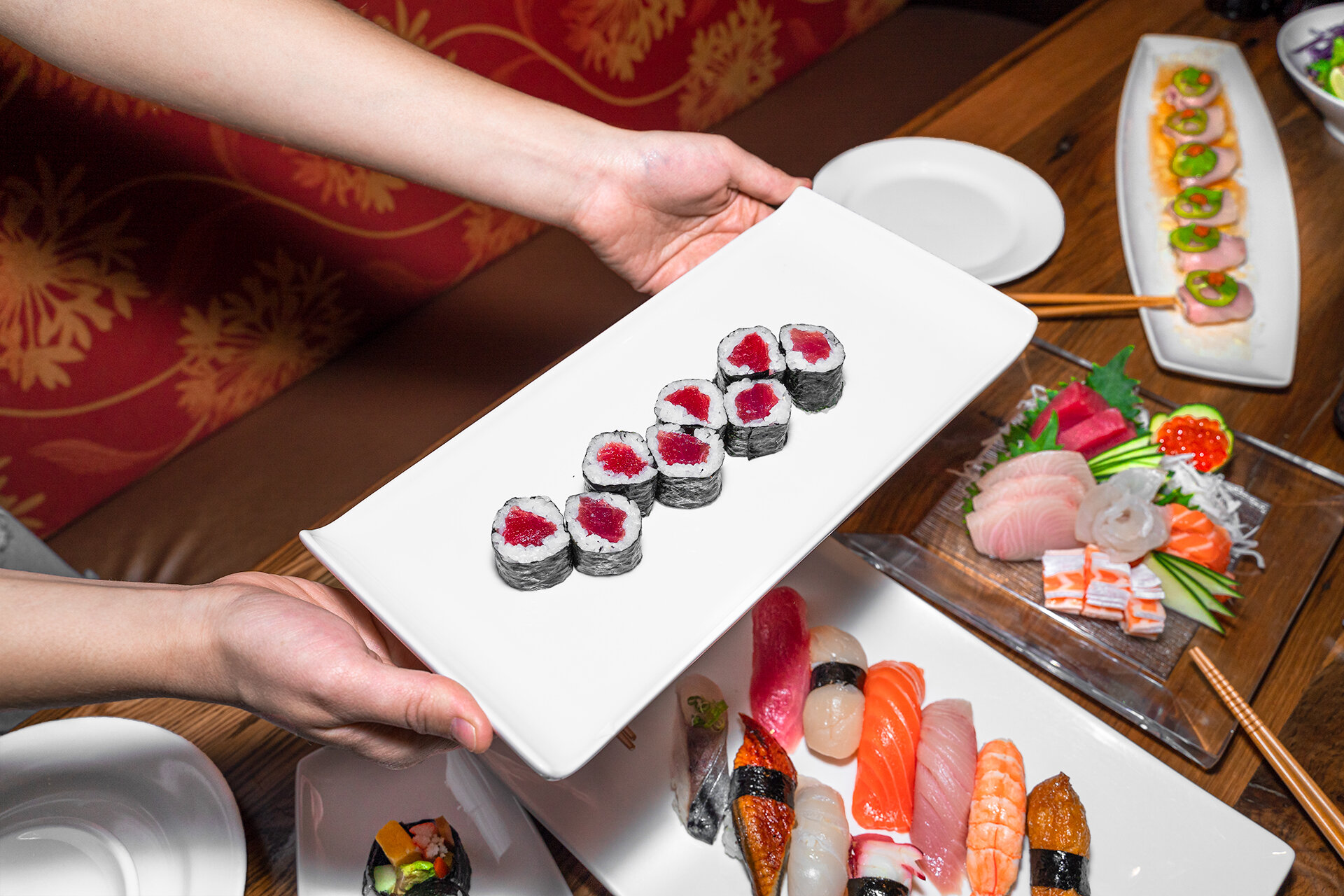Sushi Guide
Makimono Roll
Sushi in the form of a roll. Makizushi consists of sushi rice and other ingredients generally wrapped in nori (thin sheets of seaweed), but is occasionally wrapped in a thin omelette, soy paper, cucumber or shiso (perilla) leaves. The roll is formed with the help of a bamboo mat, called a makisu. The typical roll order is made up of a roll as described above, cut into six or eight pieces. Four common types of Makizushi are listed below.
Futomaki Roll
This substantial roll (usually about 2-2.5″ in diameter) contains multiple ingredients and sauces, providing the chef an opportunity to be creative. As with the Hosomaki, the Futomaki is commonly wrapped with nori on the outside. The Futomaki rolls are large enough to share or to act as an entreé for a single diner. They have become especially popular in the United States and may contain luxurious ingredients like lobster, tempura shrimp, crab and more.
Hand Roll
This type of roll is cone-shaped, with the ingredients being held within the outer layer nori (thin sheet of seaweed). This roll is about 4″ long. It is eaten with the fingers, soon after it is made, so that the crispness of the nori is maintained. This is a delicious way to change-up your favorite roll. Most Makimono Rolls may be made to order in the hand roll style.
Sushi
Sushi involves two ingredients: sushi rice and a single topping of fresh fish. The sushi rice is formed into a small mound. Then, the carefully-sliced fish is pressed on top of it. In some cases, Nigirizushi uses a small strip of toasted seaweed called nori to bind the piece together.
The topping, also known as neta, is typically seafood such as tuna, eel, haddock, snapper, octopus or shrimp. Depending on the type of fish, it may be served raw (in thin slices), grilled or tempura-style (delicately fried in a light batter). Since the fish is the star of this dish, and often served raw, the chef selects fish of the highest quality. The fish is then cut meticulously and composed into a miniature work of art. Try Nigirizushi with other types of sushi, such as Makimono to explore contrasts in taste and texture.
Sashimi
Sashimi is a Japanese delicacy consisting of very fresh, raw meat or fish sliced into thin pieces. Many people use the terms sashimi and sushi interchangeably, but they are actually two, distinct dishes. Sushi refers to any dish made with vinegared rice; and, while raw fish is one traditional sushi ingredient, many sushi dishes contain seafood that has been cooked, and others have no seafood at all. Sashimi is a wonderful way to experience the clean, delightful flavor of the sea. See the Sushi Ingredients page for a listing of some of the types of fish that may be used in Sashimi.
Bento Box
A Bento Box is a terrific way to enjoy a variety of Japanese flavors, all within the setting of the classic, divided tray known as the “Bento Box.” The selections with these may vary, but they typically include a small sushi roll, tempura (lightly-battered frying method) vegetables, rice and a cooked selection. In Japan, Bento Boxes are still used by workers as a packed lunch, by families on day trips, for school picnics, at sporting events and more.






